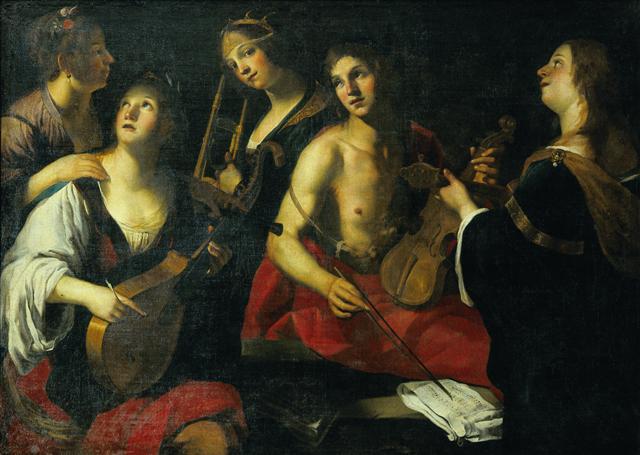I’ve embedded quite a few more videos to the Early Literature Pages. Here are the newest videos, below. To see them in their respective categories, go here. I also divided the “Trombone with Various Other Ensembles” page in half so it will load a little faster. Enjoy!
1620—Venice, Italy: Giovanni Battista Riccio calls for trombone in a collection of canzoni, Il terzo libro delle divine lodi musicali (Selfridge-Field, Instrumentation). Specific examples include Canzon La Fineta, a 2-part work for trombone and violin; Canzon La Savoldi, a 2-part work for trombone and violin; Canzon La Picchi, a 2-part work for trombone and violin; Canzon La Rubina, a 3-part work for 2 violins or cornetts and trombone, and Canzon La Moceniga, a 3-part work for 2 violins and 2 trombones (Winkler 300; Collver 65).
1622—Italy: Adriano Banchieri writes several works scored for violin, trombone, and organ: Prima Sonata, Seconda Sonata, Terza Sonata, and Quarta Sonata (Winkler 300).
1628—Italy: Ottavio Maria Grandi calls for trombone in Sonata Decima Nona, a 5-voice work for violin and 4 trombones, and Sonata Vigesima, a 6-voice work for 3 violins and 3 trombones (Winkler 301).
1640—Venice, Italy: Giovanni Antonio Rigatti calls for up to 4 trombones in various parts of his Messa e salmi, parte concertati. The indication is for viola or trombone, ad libitum.
1649—Vienna, Austria: Marco Antonio Ferro, lutenist at the court of Emperor Ferdinand III in Vienna, publishes his Sonata a due, tre, e quatro in Venice. The work, comprising 12 ensemble sonatas for strings, specifies alternative scorings, 3 of which include trombone: Sonata 5 for violin, tenore da gamba, viola da gamba or cornetto, trombone, and tiorba; Sonata 8 for 2 violins, violetta da braccio, viola da gamba or 2 cornetti, trombone, and fagotto; Sonata 11 for 2 violins, violetta da braccio, viola da gamba or 2 cornetti, trombone, and bassoon (Winkler 303; Apel, Italian Violin Music 147; Collver 49).
1652—Leipzig, Germany: Johann Rosenmüller calls for 3 trombones (or 2 viols and a bassoon) in his Siehe an die Wercke Gottes.
1669—In Vienna, Antonio Bertali (1605-1669) writes Missa Resurrectionis, which calls for 5 trombones, Missa Archiducalis, which calls for 4 trombones, and Sonata a 13, which calls for 3 trombones (Collver 44, 90).
c. 1675—Johann Rosenmüller calls for 4 trombones in Daran ist erschienen die Liebe Gottes a 7 (Collver 159).
c. 1675—Johann Rosenmüller calls for 3 trombones in Dixit Dominus (Collver 158).
1677—Johann Rosenmüller writes Entsetze dich, Natur, which calls for an instrumental accompaniment of 2 violins, 2 cornettos, 3 trombones, and continuo (Collver 158).
c. 1700—Heinrich Biber’s Missa Bruxellensis calls for 3 trombones (Collver 90).
c. 1730—Johann Joseph Fux, Sonata à 3 (E 68) for trombone, 2 violins, and basso continuo. Performance edition available (Ensemble Pub).
